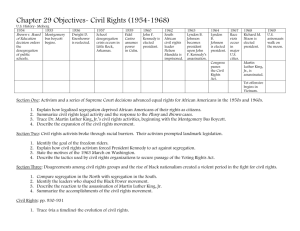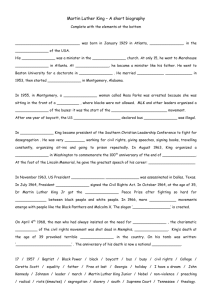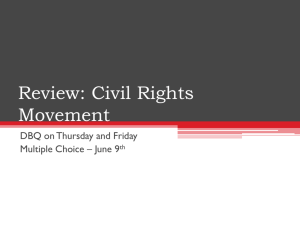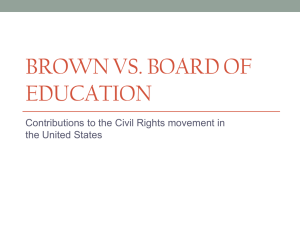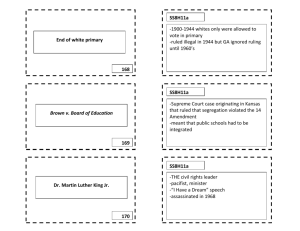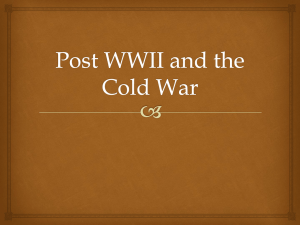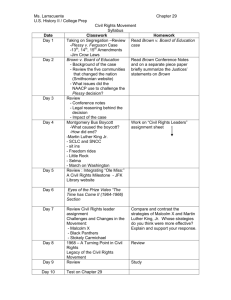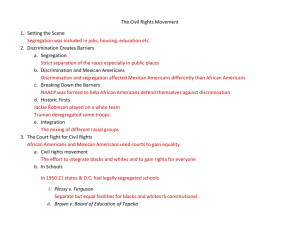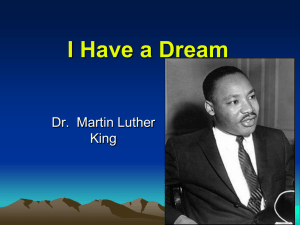STUDY GUIDE, CHAPTER 29
advertisement
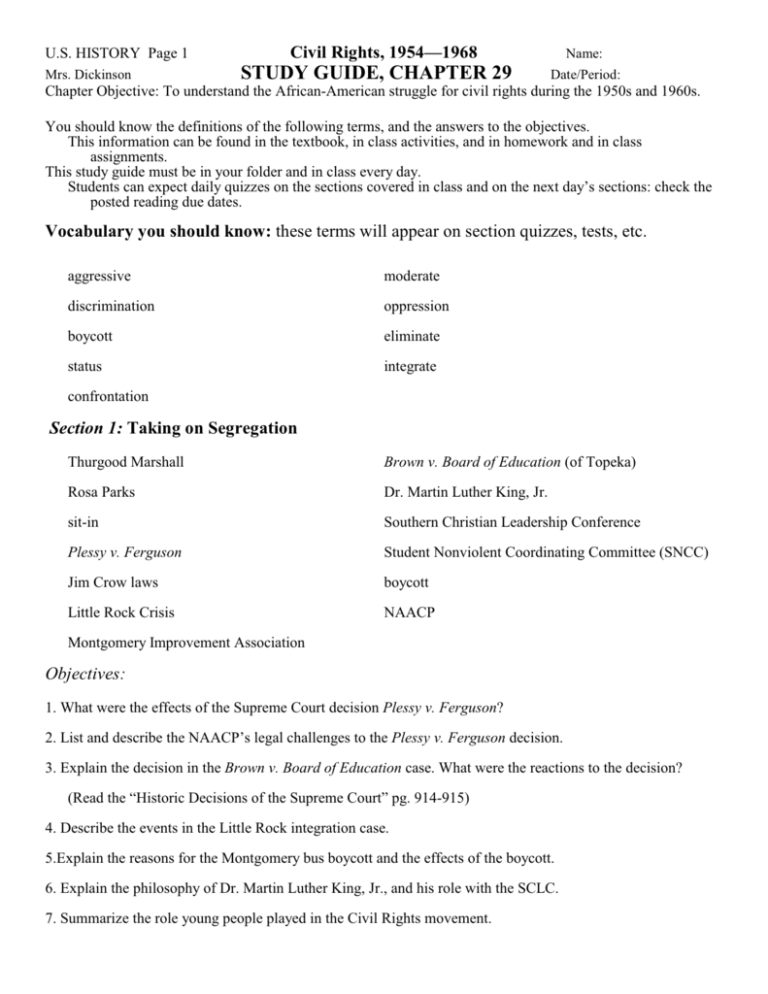
U.S. HISTORY Page 1 Mrs. Dickinson Civil Rights, 1954—1968 STUDY GUIDE, CHAPTER 29 Name: Date/Period: Chapter Objective: To understand the African-American struggle for civil rights during the 1950s and 1960s. You should know the definitions of the following terms, and the answers to the objectives. This information can be found in the textbook, in class activities, and in homework and in class assignments. This study guide must be in your folder and in class every day. Students can expect daily quizzes on the sections covered in class and on the next day’s sections: check the posted reading due dates. Vocabulary you should know: these terms will appear on section quizzes, tests, etc. aggressive moderate discrimination oppression boycott eliminate status integrate confrontation Section 1: Taking on Segregation Thurgood Marshall Brown v. Board of Education (of Topeka) Rosa Parks Dr. Martin Luther King, Jr. sit-in Southern Christian Leadership Conference Plessy v. Ferguson Student Nonviolent Coordinating Committee (SNCC) Jim Crow laws boycott Little Rock Crisis NAACP Montgomery Improvement Association Objectives: 1. What were the effects of the Supreme Court decision Plessy v. Ferguson? 2. List and describe the NAACP’s legal challenges to the Plessy v. Ferguson decision. 3. Explain the decision in the Brown v. Board of Education case. What were the reactions to the decision? (Read the “Historic Decisions of the Supreme Court” pg. 914-915) 4. Describe the events in the Little Rock integration case. 5.Explain the reasons for the Montgomery bus boycott and the effects of the boycott. 6. Explain the philosophy of Dr. Martin Luther King, Jr., and his role with the SCLC. 7. Summarize the role young people played in the Civil Rights movement. Civil Rights, 1954—1968 U.S. HISTORY Page 2 Mrs. Dickinson STUDY GUIDE, CHAPTER 29 Name: Date/Period: Chapter Objective: To understand the African-American struggle for civil rights during the 1950s and 1960s. Section 2: The Triumphs of a Crusade Freedom Riders Civil Rights Act of 1964 Voting Rights Act of 1965 “I Have a Dream” speech James Meredith Fannie Lou Hamer Robert Moses Medgar Evers Freedom Summer Selma campaign 24th Amendment Voting Rights Act of 1965 Objectives: 1. Identify the goal of the freedom riders. What did they hope to achieve? 2. How did civil rights activism force President Kennedy to take action against segregation? 3. Explain the motives behind the 1963 March on Washington. Why did civil rights organizers ask their supporters to march on Washington? 4. Describe how civil rights organizers tried to secure passage of a voting rights act. Section 3:Challenges and Changes in the Movement Civil Rights Act of 1968 de facto segregation de jure segregation Malcolm X Nation of Islam Stokely Carmichael Black Power Black Panthers Kerner Commission Affirmative Action Objectives: 1. Compare segregation in the North with segregation in the South. 2. What were some of the causes of urban rioting in the 1960s? 3. Describe the reaction to the assassination of Martin Luther King, Jr. 4. How did the ideas of Malcolm X differ from those of Martin Luther King, Jr.? 5. List and summarize the accomplishments of the civil rights movement. 6. What challenges still fact the US in the area of civil rights?
